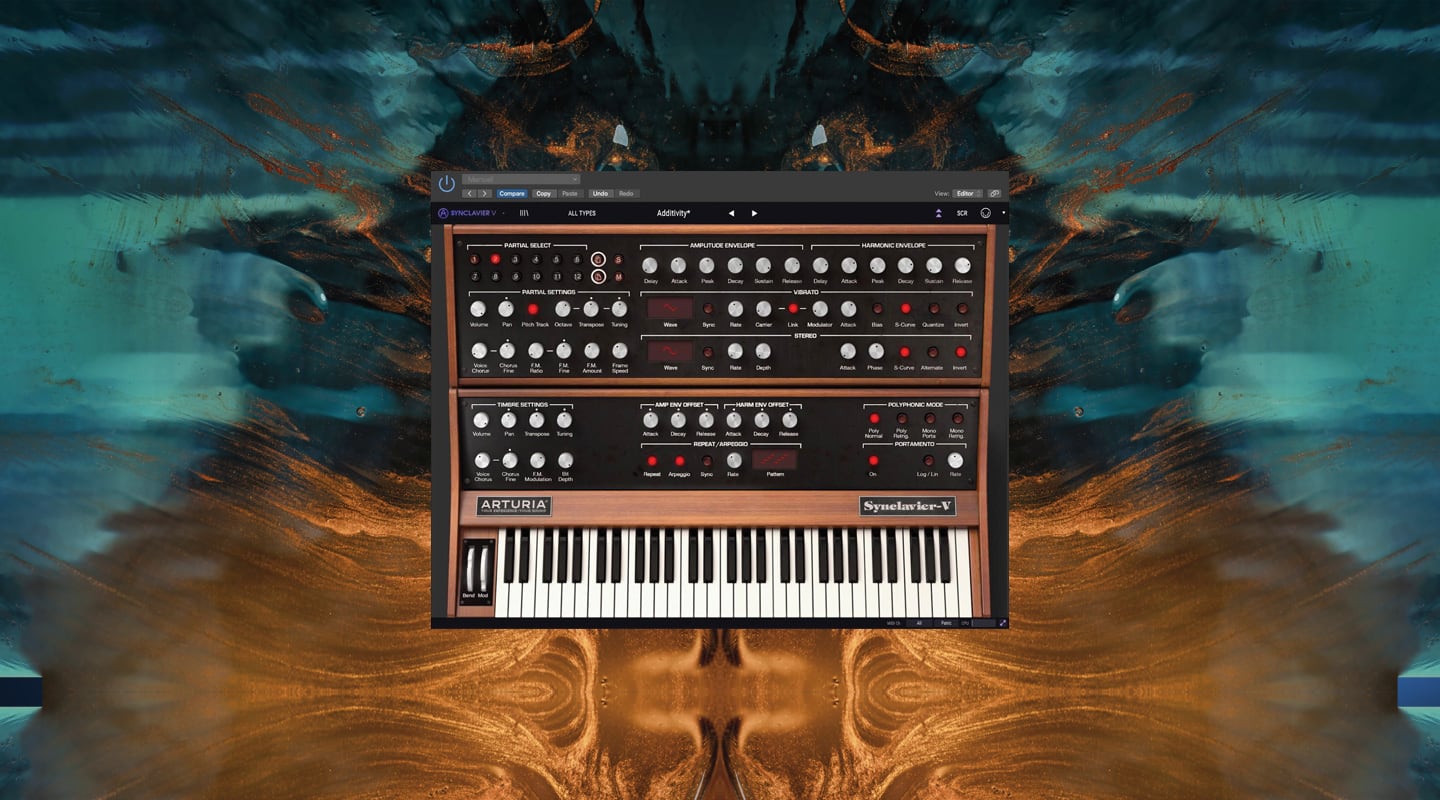
Review: Arturia V Collection Synclavier V2
40 years ago this monster synth cost a year’s average wage. Nothing average about the Arturia emulation.
The original was priced beyond the dreams of even the most synth-obsessed, and described by many an armchair expert as an over-priced DX7, but the NED Synclavier was still regarded as the holy grail of the synthesizer world in its day. In its initial release it was an additive/FM monster, with four timbre partials (the carrier/modulator additive combinations), and didn’t expand to include sampling, hard disk recording and SMPTE until its third update.
Having had no experience with the original monster that was the Synclavier, my only point of reference is working with just about every FM synthesizer that Yamaha has produced — those will have to be sufficient for comparison.
The Arturia emulation, Synclavier V, developed in conjunction with New England Digital, is the DX7 programmer’s dream come true. Each wave generator is additive (with 25 harmonics available), so instead of working from the basic building block of a sine wave, as was the case with Yamaha’s original operator (it wasn’t until the release of the TX81Z module and its keyboard equivalents that they introduced more complex operator waveforms), the user is starting with a sonically rich combination of harmonics in the carrier and then warping those with another additive waveform. Another great helper from Arturia: they have included preset sawtooth, square and triangle waves to speed up waveform creation.
MODULATION IS KING
As is the case with any synthesizer, dynamics and tonality changes are key to putting life into your sounds, and the Synclavier V has as many modulation sources as you could possibly need. Each partial has a separate envelope generator for amplitude (carrier) and harmonic (modulator), plus an FM LFO to modulate amount and a Stereo LFO for panning movement.
For layers, splits and tonal variation across the frequency range each partial has key scaling (or key tracking) available, which is easily adjusted by dragging the zone range with a mouse.
An unusual feature of the Synclavier V is a function called Timbre Frame, which is a snapshot of the current sound parameters — a series of these frames (originally 50 in version 1, but expanded to 100 frames in this version) can be dragged up onto a timeline (kind of like hanging the washing on the line), which runs across the top of the display screen, and when a key is played the slices will play in sequence, changing the tone of the held chord by crossfading or morphing between the parameter values. Each partial has its own timeline, and frame speed can be set as needed and the timeline can be looped if required. Great for evolving sounds and effects transitions, it can also be used as a sequencer if slices have been transposed.
NEED TO KNOW
Arturia V Collection Synclavier V2
Virtual Instrument


BRING YOUR OWN SAMPLES
In Version 2, the current version found in the V Collection, you can swap out the carrier portion of a partial with a sample, using the collection provided, or loading your own. The resynthesis function can then recreate the sample for better transposition playback, utilising the 100 slices mentioned above, and then by using the additive modulation part of the partial the results are off-the-charts. The sonic complexity created by just one partial set is impressive, so the bulked-up 12 partials available (expanded from the original’s four partials) give the Synclavier V an unbelievable amount of sonic power.
Arturia has also added an effects section with the usual favourites such as chorus, delay and reverb, which give the user that little bit of extra warmth and thickness.
The performance windows, the ‘standard panel mode’ and ‘extended panel mode’ give the user global control of tone and effects, simultaneous control of FM amounts, as well as bit depth, control of the onboard arpeggiator, and a wealth of other real-time controls. To make this functionality even better, you can turn on Arturia’s standard MIDI Learn screen and map your favourite hardware controller to these parameters. Brilliant!
Putting it all in perspective, this Synclavier emulation alone justifies the extremely modest asking price of the entire V Collection, but with all of the other synthetic goodies provided, it’s like a complete history of the synthesizer in a software package.


















The Synclavier pricing started out as “a year’s average wage”.
This was the baseline cost.
The 9600 series were pushing $250,000.
Realistically, these things were astonishingly expensive. For anyone who has worked with them, the comparison with a DX7 is, shall we say, naive … They were so much more, yet ironically, so much less.